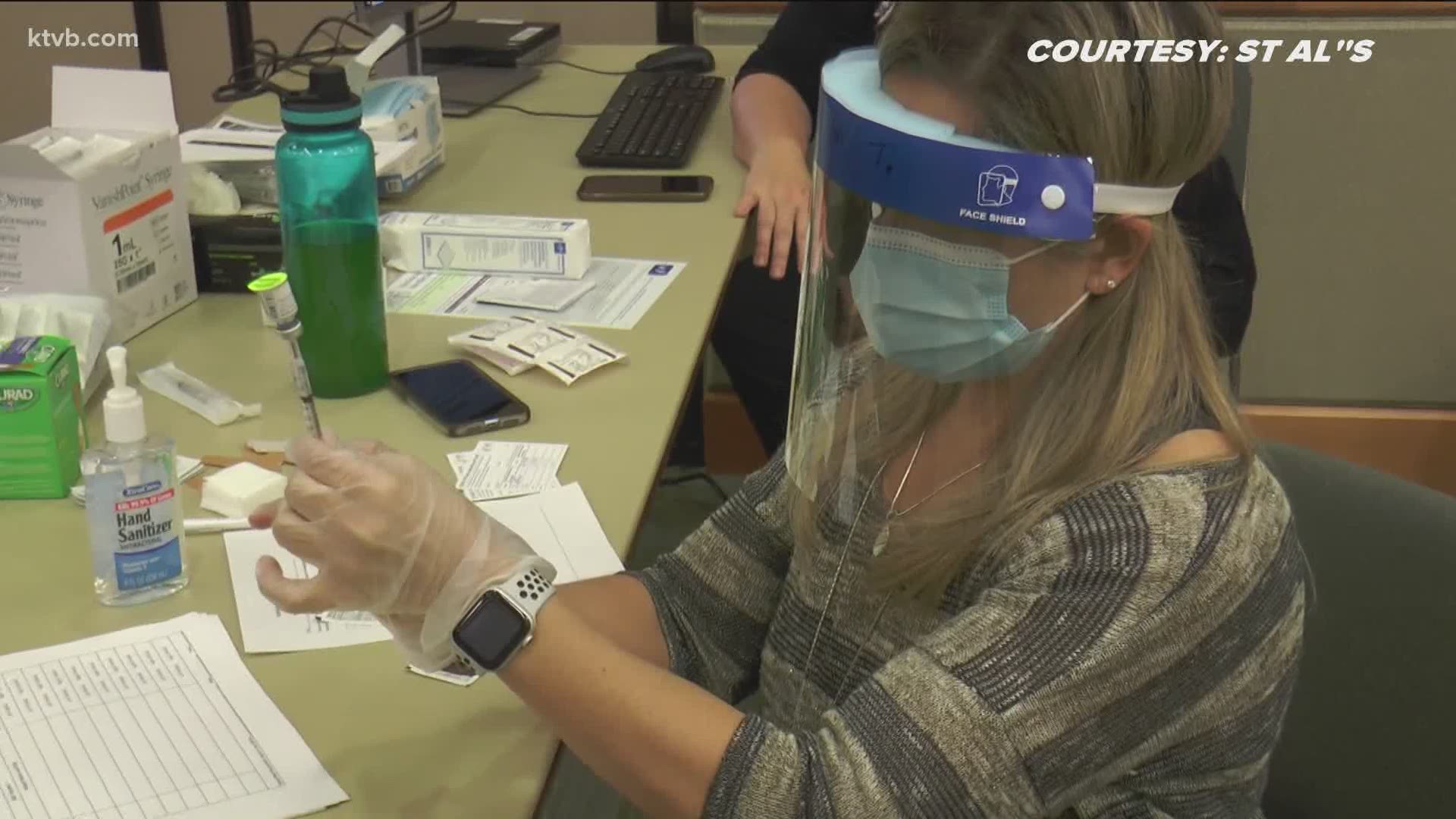BOISE, Idaho — As of Tuesday, Idaho ranks dead last in the country for the total number of COVID-19 vaccines it's administered, according to data from the Centers for Disease Control and Prevention.
And it's not entirely because of a lack of supply. The Idaho Department of Health and Welfare says, as of Sunday, there are 101,000 unused vaccines in Idaho, while thousands of Idahoans wait for their shot in the arm.
To understand fully why there are so many unused vaccines in the state, 7 Investigates first tracked the flow of vaccine distribution in Idaho because every state is different.
Each of Idaho's seven health districts has a list of providers within their jurisdiction who meet the criteria to administer vaccines. For example, Southwest District Health currently has eight providers. Central District Health has nine.
Each week, enrolled providers ask their health districts for however many doses they want. The health districts place the orders to the state, which then places the collective order to the federal government. The feds determine the amount the state gets.
Once that number is finalized by the federal government, the Idaho Department of Health and Welfare decides how many doses each of the seven health districts will receive for the week, based on a number of criteria, including population size and which vaccine group is currently open.
Health departments then determine how many doses each of their enrolled providers will receive.
"Every week we put in our order of what we can do and it gets modified to what can be given to us," said Scott Milner, St. Luke's senior director of pharmacy. "I think in the Central District, there's somewhere near 60 different people requesting inventory, and they obviously can't outfit and match all of the potential."
Central District Health tells KTVB the distribution changes every week. It's based on a number of factors like how much the provider received the week before and their capacity for the upcoming week.
"I want to say I think this coming week, I think we're getting roughly 30% of what we asked for," Milner said.
Only 30%. Yet, IDHW said Tuesday there are currently 101,000 unused vaccines in Idaho. Who has them? And why aren't they using them?
"Most of us don't know where the extra doses are," Milner said. "When I talk to the larger players around, you know, my Saint Al's counterpart, Primary Health, Saltzer ... we don't know that there's extra freezer space. I have freezer shelves that are empty most weeks, especially Monday mornings. We've shipped everything, almost everything out. And so if there are extra doses, as an engaged provider, we ask for help to let us know where those are so we can get them out because we don't want to see someone cancel appointments because they're out and have doses sitting in a freezer somewhere else."
Health and Welfare said Tuesday that they learned this week that CVS and Walgreens have about 32,000 doses not yet administered in Idaho. IDHW Director Dave Jeppesen says the doses were meant for long term care facilities, which became eligible for vaccines on December 28.
This week, IDHW will take back 12,600 of the 32,000 doses and reallocate them around the state. Jeppesen expects to take back even more in the coming days.
"We're not sure exactly why [CVS and Walgreens] had so many extra doses, but once we realized that that was the case, they were very, very forthcoming and very willing to reallocate them back to the state," Jeppesen said.
As for the other 69,000 unused doses sitting in the hands of providers around the state, Jeppesen said there could be a number of reasons why they haven't been administered yet into the arms of Idahoans who want them.
"It could be that they have a bunch of appointments coming up in three days and they have inventory for that, or it could be that they're having trouble getting their doses out because they have staff that are out sick, or whatever the case might be," he said.
Providers began administering COVID-19 vaccines in Idaho on Dec. 14 based on the state's rollout plan. Now 50 days later, Gov. Brad Little says more transparency is needed. He issued an executive order late last week requiring vaccine providers use their doses within 7 days of receiving them.
He's also ordered better data tracking beginning next week.
"We want that to be both public as well as visible to the public health district so that a conversation can be had to say, 'what's the situation there? Well, what do we need to do about that? Do we need to transfer those doses to someone else in need?'" Jeppesen said.
As for St. Luke's, Milner says they're able to administer 80 to 90% of the vaccines they receive each week. What doesn't go out, gets rolled over to the next week. He says having a predictable cadence of inventory each week would certainly help speed up and streamline the distribution process. But say the word, and engaged providers like St. Luke's will be ready to give out more doses.
"Not that anyone has malice in the process, but if you can't [administer your vaccines], either communicate, share or break down the inventory to help get it out faster," Milner said. "I think that as a state, we can do better."
Both the Moderna and Pfizer vaccines can be stored for up to six months. But Pfizer's requires ultra-cold storage to last that long. The state maintains they know of no vaccine that's been wasted.
Sign up for the KTVB Daily 7 e-mail newsletter and never miss Idaho's top stories.
Facts not fear: More on coronavirus
See our latest updates in our YouTube playlist:

